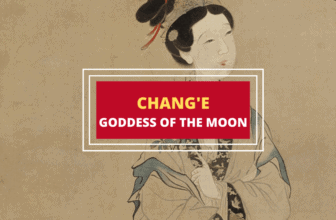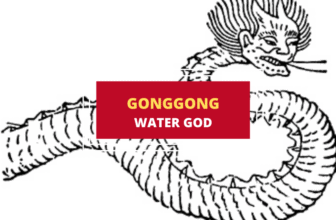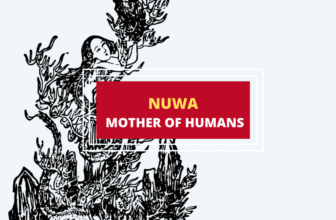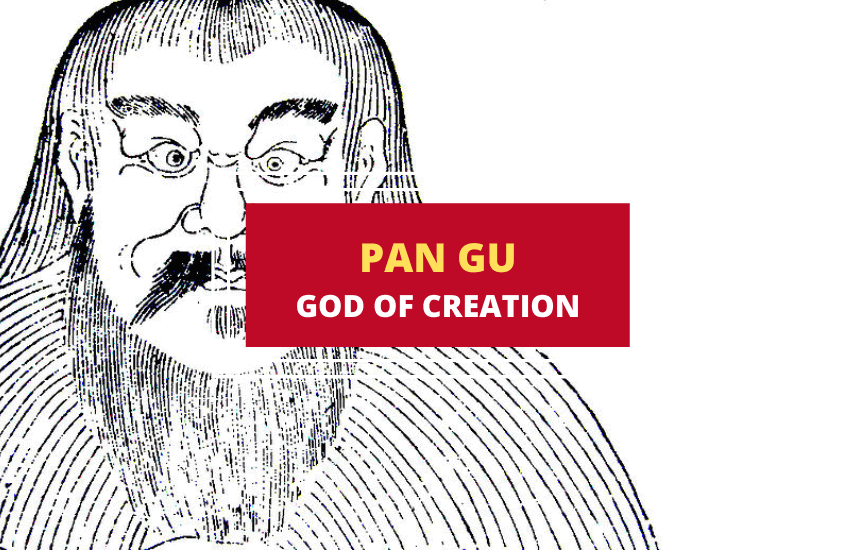
Table of Contents
Pan Gu is a central figure in Chinese mythology, often hailed as the progenitor of all life and the architect of the world as we know it. Emerging from the primordial chaos encapsulated in a cosmic egg, Pan Gu is the embodiment of creation and transformation. His physical form is typically described as a gigantic, primordial being, often depicted with horns and tusks, covered in fur.
Who is Pan Gu?
Pan Gu, also known as Pangu or P’an-Ku, is a figure in Chinese mythology often recognized as the creator of the universe. He’s usually described as a giant horned dwarf with long hair all over his body. In addition to his two horns, he often has a pair of tusk as well and normally carries a huge battle axe.
His clothes – when there are any – are typically drawn as primitive, made out of leaves and string. He is also pictured carrying or molding the Yin and Yang symbol as the two are said to have come into existence together.
Pan Gu or the Egg – Who Came First?
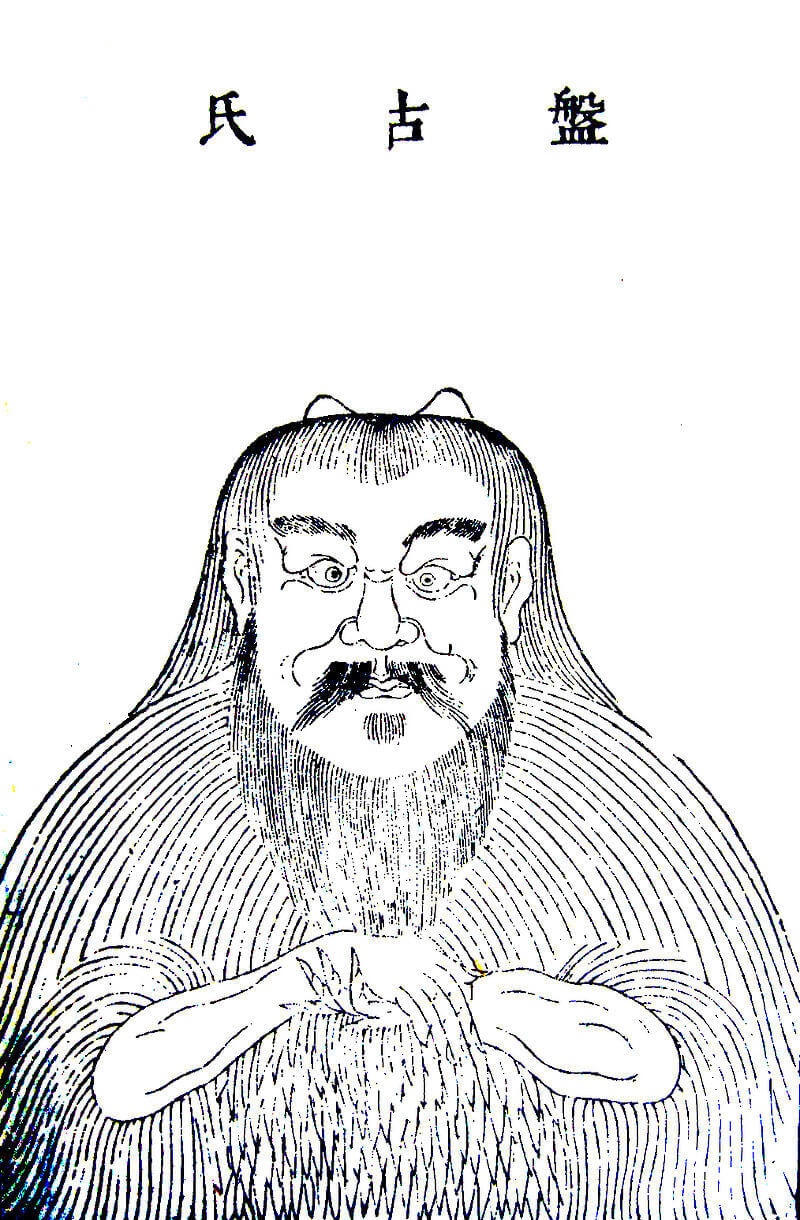
“The chicken or the egg” dilemma has a very simple answer in Chinese mythology – it was the egg. At the very beginning of the universe, when there was nothing but an empty, formless, featureless, and non-dual primordial state, the primordial egg was the first thing to coalesce into being.
For the next 18,000 years, the primordial egg was the only thing in existence. It simply floated in nothingness with the two cosmic dualities – yin and yang – slowly forming inside of it. As the yin and yang eventually came into balance with the egg, they turned into Pan Gu himself. This union between the cosmic egg and Pan Gu growing inside it is known as Taiji or The Supreme Ultimate in Taoism.
After the 18,000 years had passed, Pan Gu was fully formed and ready to leave the primordial egg. He took his giant axe and split the egg into two from within. The murky yin (presumably the egg’s yolk) became the basis for the Earth and the clear yang (the egg’s white) was to be the sky.
Before the two halves of the egg could become the Earth and sky, however, Pan Gu had to do some heavy lifting – literally.
For another 18,000 years, the hair cosmic giant stood between the Earth and the sky and pushed them apart. Every day he managed to push the sky 3 meters (10 feet) higher and the Earth 3 meters thicker. Pan Gu grew 10 feet per day too as he was striving to push the two halves further apart.
In some versions of this creation myth, Pan Gu has a few helpers – the Turtle, the Quilin (a mythical Chinese dragon-like horse), the Phoenix, and the Dragon. Where they came from isn’t exactly clear, but these are the four most revered and ancient Chinese mythological creatures.
With or without help, Pan Gu finally managed to create the Earth and the sky as we know it after 18,000 years of effort. Once he was done, he drew his last breath and died. His entire body turned into parts of the earth.
- His last breath became the wind, clouds, and mist
- His eyes became the sun and the moon
- His voice became thunder
- His blood became the rivers
- His muscles turned into the fertile lands
- His head became the world’s mountains
- His facial hair turned into the stars and the Milky Way
- His bones became the Earth’s minerals
- His body hair transformed into the trees and bushes
- His sweat turned into the rain
- The fleas on his fur turned into the world’s animal kingdom
A Simple Rice Farmer
Not all versions of the Pan Gu creation myth have him die at the end of the second set of 18,000 years. In the Buyei version of the myth, for example (the Buyei or Zhongjia people being a Chinese ethnic group from the South-eastern region of Mainland China), Pan Gu lives on after separating the Earth from the sky.
Naturally, in this version, the trees, winds, rivers, animals, and other parts of the world aren’t created from his body. Instead, they just appear while Pan Gu himself retires from his duties as a Creator God and starts to live as a rice farmer.
After a while, Pan Gu married the daughter of the Dragon King, the god of water and weather in Chinese mythology. Together with the Dragon King’s daughter, Pan Gu had a son named Xinheng.
Unfortunately, when he grew up, Xinheng made the mistake of disrespecting his mother. The Dragon’s daughter took offense to her son’s disrespect and chose to return to the Heavenly realm ruled by her father. Both Pan Gu and Xinheng pleaded for her to return but once it was clear that she wouldn’t do so, Pan Gu had to remarry. Soon after, on the sixth day of the sixth month of the lunar calendar, Pan Gu died.
Left alone with his stepmother, Xinheng started to pay respects to his father on the sixth day of the sixth month every year. This day is now the traditional Buyei holiday for ancestral worship.
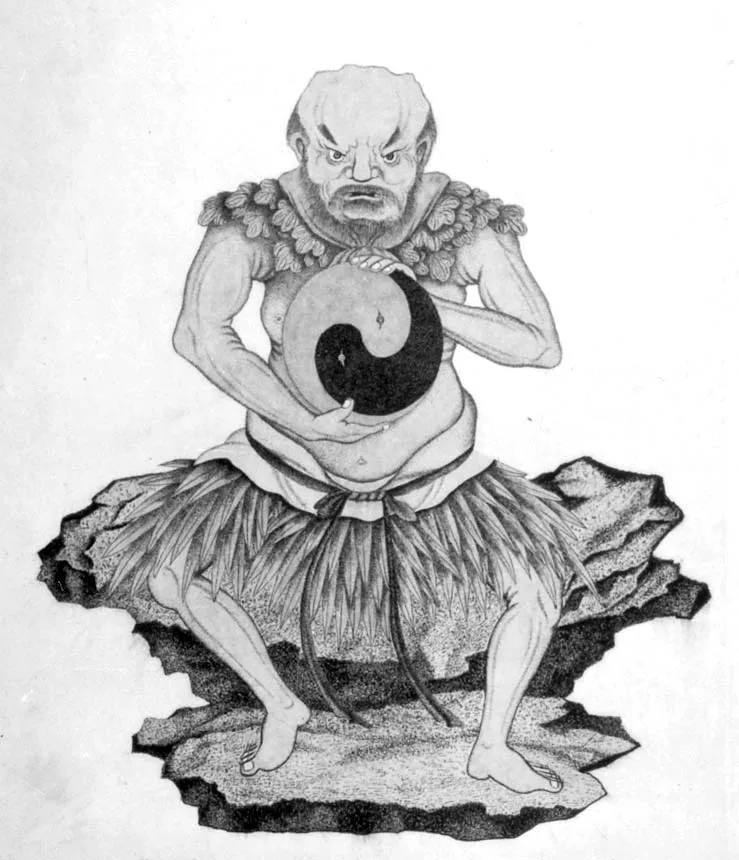
Pan Gu, Babylon’s Tiamat, and the Nordic Ymir
In English, the name Pan Gu sounds like something that should mean “global” or “all-encompassing”. However, this is the Greek-derived meaning of the word “pan” and it doesn’t have anything to do with Pan Gu.
Instead, depending on how his name is spelled, this god’s name can be translated as either “basin ancient” or “basin solid”. Both are pronounced the same way.
According to Paul Carus, the author of Chinese Astrology, Early Chinese Occultism (1974) the name can be accurately interpreted as “aboriginal abyss” i.e. the first deep nothingness of which everything came to be. This is in line with the Pan Gu creation myth. Carus further speculates that the name can be the Chinese translation of the Babylonian god Babylonian primordial Tiamat – The Deep.
Tiamat does predate Pan Gu by over a millennia, potentially two. The first mention of Pan Gu is dated to 156 AD while evidence of Tiamat worship has been dated to as far back as the 15th century BCE – 1,500 years before Christ.
Another curious similarity is that between Pan Gu and the god/giant/jötun Ymir in Norse mythology. Both are the first cosmic beings in their respective pantheons and both had to die for the Earth and everything on it be made out of their skin, bones, flesh, and hair. The difference here is that Pan Gu willingly sacrificed his life to create the Earth while Ymir had to be killed by his grandchildren Odin, Vili, and Ve.
As curious as this parallel is, there doesn’t seem to be a connection between the two myths.
Symbols and Symbolism of Pan Gu
Pan Gu’s basic symbolism is that of many other creation deities – he is a cosmic being that first emerged from the void and used his immense powers to shape the world. Unlike many other creation gods, however, Pan Gu is benevolent and not morally ambiguous.
It’s also important to note that Pan Gu doesn’t appear to have done what he did with the express purpose of creating humanity. Instead, his first and main feat was to separate the two constant universal opposites in Taoism – the Yin and the Yang. With his very birth from the primordial egg, Pan Gu began separating the two extremes. It was only in doing so that the world was created, but it was a consequence of these actions rather than their goal.
In other words, even Pan Gu himself was subject to the universal constants and not their master. He was simply the force the universe created and used to reshape itself. Pan Gu is also often associated with Yin and Yang and is depicted as holding or shaping the sacred Taoist symbol.
Importance of Pan Gu in Modern Culture
As the creation god of one of the oldest and most well-known religions in the world, you’d think that Pan Gu, or characters inspired by him, will be frequently used in modern culture and fiction.
That’s not exactly the case.
Pan Gu is actively worshipped in China and there are holidays, festivals, theatre shows, and other events in his name. In terms of fiction and pop culture, mentions of Pan Gu are somewhat scarce.
Still, there are a few examples. There is a Pangu Dragon in the Divine Party Drama video game as well as in the Dragolandia video game. There’s also a version of Pan Gu in the Ensemble Studios video game Age of Mythology: The Titans.
FAQs About Pan Gu
Pan Gu is described as a beast with horns and hair. He doesn’t have a human form.
Pan Gu lived alone for his entire existence, with no descendants. The only creatures he is described together with are the four legendary creatures who sometimes help him.
The first written version of the story of Pan Gu has been traced back to around 1,760 years ago, but prior to this, it had existed in oral form.
Wrapping Up
While there are similarities between the story of Pan Gu and other deities from ancient mythologies, Pan Gu is steeped in Chinese culture and an important deity of Chinese mythology. Even today, Pan Gu is worshipped along with Taoist symbols in many parts of China.


